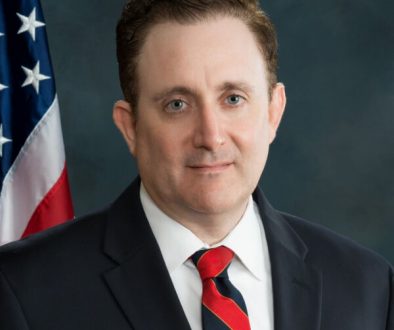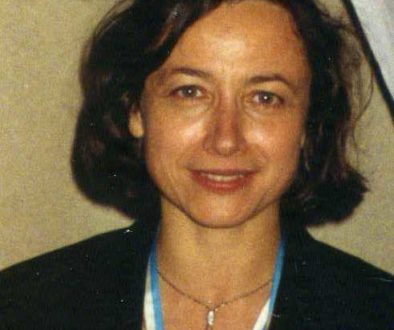Interview with Anne Beuter

I am professor emeritus in neuroscience at the National Polytechnic Institute (University of Bordeaux) in France. My research interests include motor disorders and the electrical stimulation of the brain. I obtained a master’s degree in science from the University of Wisconsin in Madison (USA) and a Ph.D. in science from the University of California in Berkeley. For several years I pursued a teaching career in the USA (University of Southern California at Los Angeles), in Canada (University of Quebec at Montreal and McGill University) and in France (University of Montpellier and University of Bordeaux).
I have supervised around 30 graduate and post graduate students over the course of my career. My most recent research projects have been financed by a centre of excellence called BIOSIM headed by Prof Erik Mosekilde (Technical University of Denmark). One of the central themes of this work has been the application of the 3Rs principle (see below).
In 2009 I registered a patent application of research with which I am involved, and which was recently delivered for use as a method of closed loop electrical stimulation, No ep09305432 : “Method and apparatus for electrical cortex stimulation”, with patent extensions to Europe, USA, Canada and Japan.
I have published around 150 peer reviewed articles and several hundred abstracts and have provided my academic expertise to various funding agencies (European and Canadian). Last but not least, I received funding for a scientific expedition that I organised and led to the Annapurnas massif in the Himalayas in the 1980s.
Antidote Europe (AE): you are a professor in neuroscience specialising in the care of individuals affected by movement disorders, such as Parkinson’s Disease. Could you briefly describe your work, bearing in mind that most of our readers are non scientists?
Deep brain stimulation (DBS) is currently used to treat the symptoms of Parkinson’s Disease (PD). This technique of neuromodulation (the process by which a nerve cell uses neurotransmitter chemicals to regulate other nerve cells) does carry certain risks in addition to being an invasive procedure. Despite the proven benefits of this technique, which has been in use since the late 1980s, we now recognise the limits of this approach, for example the side effects that are responsible for reducing the quality of life of people receiving DBS. In contrast to traditional DBS, the use of « intelligent » neuromodulation consists of applying a closed loop in which nerve tissue is stimulated, as and when needed, and better still, by avoiding the stimulation of deep structures within the brain, we now know that a good therapeutic effect can be obtained simply by stimulating the cortex (the outermost layer of the brain). By introducing these two improvements in practice, we have been able to propose a new closed loop stimulation method of the cortex for the treatment of PD, which is less invasive for patients.
The new procedure is less time consuming and also less complicated, in addition to requiring less equipment and avoids the tissue damage and swelling near the electrodes. The closed loop technique allows nerve signals to be detected and to be used in turn to regulate neuromodulation. This procedure is offered to patients who are not suited to DBS, for example due to age limit criteria. Without going into too much detail, suffice it to say that this type of electrical stimulation when applied to the motor cortex, records the local field potential through flat electrodes applied to the brain outer surface (dura mater), after which the nerve impulses are applied once they have been adjusted for frequency, without interfering in the normal physiological activities of the brain area under treatment. This new approach to PD will allow for a more personalised treatment for patients that is less invasive and that can be performed under general anesthesia
AE: You have published well over 100 articles in peer reviewed science journals, which is very impressive. Even more impressive is the fact that you have not used any animals is the course of your work. How have you managed to avoid performing any animal experiments in a scientific culture where animal research is both encouraged and rewarded with grants?
The alternative to animal experiments put forward by the European research framework that funded my studies is based on the principle of the 3Rs (Replacement/Reduction/Refinement), which can be explained as follows: replacement, reduction and refinement of procedures involving experimental animals by the use of various alternatives (see Declaration of Bologna). Our research framework teams succeeded in demonstrating that it is possible to develop new drugs and treatment strategies without resorting to animal experiments. Some of our colleagues have used very complex non animal models to study the heart (see the studies by Dennis Noble who succeeded in developing the first viable model of a heart). Other researchers have achieved results in the field of cancer of the kidney, of the pancreas and neurodegenerative diseases.
I chose not to experiment on animals for several reasons. I was not convinced by some of the animal models used to study PD and I preferred models based on computational neuroscience. It should be noted that historically, animal experiments were not responsible for the discovery of DBS. I really did not want to use animals and I was not prepared to compromise my principles on this matter, even if it meant that I would pay a price in terms of my carreer prospects.
AE: In your view, is it possible to avoid animal experiments, in particular studies in monkeys, in order to study PD? Is there scientific/clinical proof to demonstrate this?
When I see what has happened in my field over the years, I feel that we are winning the battle as more and more laboratories that are at the forefront of this research choose to work with human subjects, whether it be in the USA, Switzerland or the UK, whilst fulfilling all the ethical prerequisites. The modern trend is to apply a more personalised approach for each patient, in addition to using less invasive and more „humane“ techniques. I am hopeful that in the future this trend will establish itself and that DBS will give way to it. See the following article on this subject by Ineichen, published in September 2014.
Ineichen C, Glannon W, Temel Y, BaumannC Rand Sürücü O (2014) A Critical reflection on the technological development of deep brain stimulation (DBS).
Front.Hum.Neurosci. 8:730. doi: 10.3389/fnhum.2014.00730
AE : We sincerely thank you for this interview. Are there any other thoughts that you would like to share with our readers?
AB: The following quote about the universe…
« A human being is a part of the whole, called by us the ‘Universe’, a part limited in time and space. He experiences himself, his thoughts and feelings, as something separate from the rest – a kind of optical delusion of his consciousness. This delusion is a kind of prison for us, restricting us to our personal desires and to affection for a few persons nearest to us. Our task must be to free ourselves from this prison by widening our circle of compassion to embrace all living creatures and the whole of nature in its beauty. Nobody is able to achieve this completely, but the striving for such achievement is in itself a part of the liberation and a foundation for inner security. – New York Post, 28 November 1972 (this quote is based on a letter written by Einstein in 1950).
(and this includes animals of course !)




